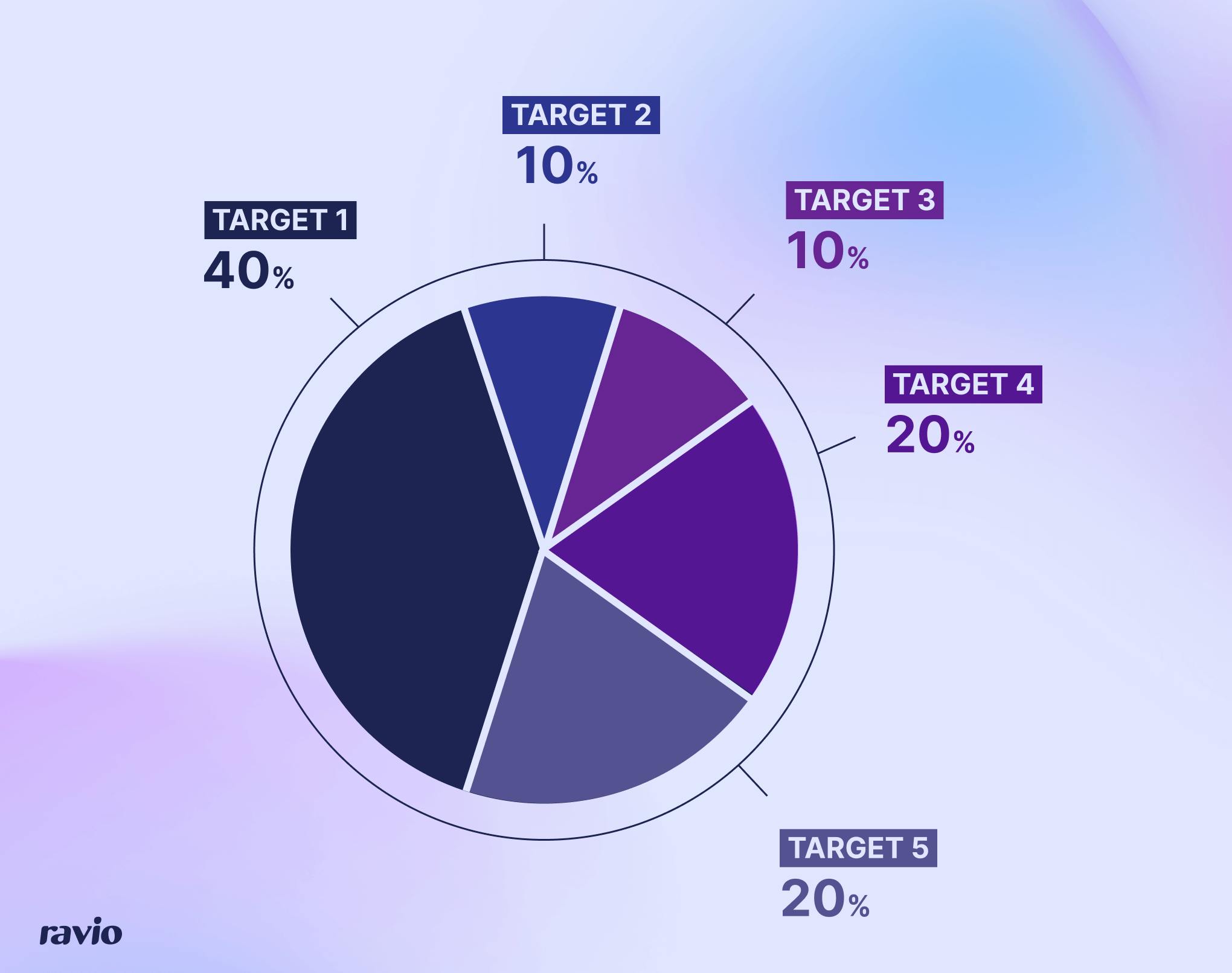Sales incentive plans are designed to motivate sales teams by aligning an individual’s compensation package with business targets or desired behaviours – through variable pay components like commission per deal, or revenue-based bonuses.
In the early stages of a company, sales incentives might be the same deal-based commission structure for every account executive.
But, once you reach a scale where there are multiple sales teams in different locations with different role focuses, different targets, and different incentive types, sales compensation can become incredibly complex to manage.
To help navigate these complexities, we spoke with Arif Ender.
Arif is currently Director of Compensation (EMEA & LATAM) at Palo Alto Networks as well as a Faculty Member at WorldatWork providing training to other Rewards professionals – and with his previous experience at Meta and Mars on top of that, he’s the perfect candidate to share insights on designing and scaling effective sales incentive plans.
Subscribe to our newsletter for monthly insights from Ravio's compensation dataset and network of Rewards experts 📩
What is a sales incentive plan?
A sales incentive plan is a structured compensation programme that rewards a salesforce based on their attainment of specific sales targets (financial or non-financial) and performance goals.
It’s typical for 30-50% of a sales employee’s total compensation package to be variable components tied to defined targets or behaviours, on top of base salary – which is different from most other roles where the majority of total compensation is salary.
Sales incentive plans are also known as sales incentive programmes, sales incentive schemes, sales incentive compensation, or on-target-earnings (OTE) incentives.
Example: GitLab’s sales incentive scheme
It isn’t common for companies to openly share how they structure their sales incentive plans (beyond showing the base salary vs OTE in job adverts), but with Gitlab’s very transparent company handbook, we can see how some of these elements can work in practice.
Firstly, GitLab benchmark base salary for their sales team at or above the median market rate for their role in San Francisco, with a location differential used to account for employee location.
Beyond this base structure, GitLab adds sales incentives – with job descriptions (like this one for a Sales Manager in the US) highlighting that “sales roles are also eligible for incentive pay targeted at up to 100% of the offered base salary”.

GitLab does have a full sales compensation page in their company handbook, but this is not publicly available.
However, their inside sales team job family page highlights a 50-50 split and commission used as the main incentive structure: "You will typically get 50% as base and 50% based on commission."
What makes an effective sales incentive plan? Advice from Arif Ender
Done right, sales compensation can be a key driver of business growth. Done wrong, it leads to revenue-at-any-cost mentalities, internal conflict, and overpaying for mediocre results – all ultimately meaning a worse ROI for ‘cost of sales’.
We asked Arif Ender, Director of Compensation (EMEA & LATAM) at Palo Alto Networks for his advice on what makes a good sales incentive scheme:
- Start with simple foundations, and build from there
- Ensure alignment with the overarching business strategy
- Tailor incentive types for differences in roles, location, targets
- Set realistic targets, but with enough stretch to motivate
- If a target is important, make sure it’s weighted as at least 20% of total variable pay
- Make clarity and communication a priority.

Tip 1: Start with simple foundations, and build from there
If you’re a startup putting a sales incentive plan in place for the first time, the biggest mistake you can make is overengineering your target-setting and incentives.
"For a company that's at the start of its journey, we don't know what the sales quota should be," explains Arif. "A lot of companies think they can intuitively set good targets based on business projections or market research, but these don't translate directly into individual sales quotas without a deep understanding of your specific product, sales cycle, customer base, and team capabilities.”
Without historical data on what drives revenue and established performance patterns, any complex structure you put in place is guesswork dressed up as strategy.
Starting simple means establishing clear principles before adding complexity.
Begin with one foundational structure for all sales roles, rather than creating multiple variants for every conceivable difference. The best foundation is likely deal-based or revenue-based quotas with a defined commission rate or bonus payout for achieving or exceeding the quota – but this should align to your business goals and core compensation principles.
From there, focus on ensuring you have the right targets in place (driving the right behaviours, achievable but with enough stretch to motivate the team) before introducing any additional elements like accelerators or tiered rewards or additional targets for different behaviours.
Tip 2: Ensure alignment with the overarching business strategy
Sales incentives must connect directly to your company's strategic objectives, or they risk driving behaviours that work against what the business is trying to achieve.
“Sales compensation strategy should cascade down from the overarching company strategy,” explains Arif, “so that the incentives and targets are linked to what you want to accomplish as a business.”
The cascading effect starts with company-level objectives that inform overall revenue and growth targets. These break down into departmental goals that might be informed by geographies, product mix, or customer segment priorities. Individual targets are based on the activities that will ladder up to those departmental objectives.
It means that when sales professionals hit their targets, they automatically contribute to broader company priorities. Without this alignment, you create internal competition between short-term sales wins and long-term business objectives.
And it informs the type of sales incentives that make sense for your company too.
With geographic expansion, for example, you might offer territory bonuses for first deals in that region, higher commission rates for the initial 12 months to compensate for the additional effort required, or accelerators that kick in once a salesperson closes a certain number of deals in the new market.
"Whether your strategy is growth-related or maybe geographical expansion, the beauty of sales compensation is that there are so many different levers to play with."

Director of Compensation (EMEA & LATAM) at Palo Alto Networks
Tip 3: Tailor incentive types for differences in roles, location, targets
As your company scales, you’ll need to build differentiated incentives for different sales team members focused on different areas of business health.
Maybe you have a team of Account Executives focused on building relationships from scratch in a new market. But then you also have an Inside Sales team handling smaller deals in your core markets. And a renewals team entirely focused on upselling existing customers onto a new product.
These different roles will need different base/variable mixes, payout cadences, incentive types.
For instance, those new market AEs probably need a more aggressive focus on variable pay with tiered incentives or accelerators to really drive motivation towards new logo acquisition.
The inside sales team handling smaller deals might need monthly payouts to maintain momentum given their shorter sales cycles, but with lower commission percentages since individual deal influence is reduced.
Arif’s advice is to start by mapping out your sales ‘personas’. “There are different personas in sales, with classics like the ‘hunters’ versus the ‘gatherers’,” he explains. “Someone working on renewals is going to be a gatherer, and their incentive plan should align with that.”
From there, use those guiding principles that you’ve already built through the foundational thinking and business strategy alignment, to inform what meaningful differentiation looks like for different focuses and targets.
"The guiding principles should be consistent on an international or global scale,” says Arif, “and the different schemes you put in place as you scale must then reflect genuine variations in impact, effort, and business value.”
Tip 4: Set realistic targets, but with enough stretch to motivate
Target setting represents one of the most critical elements of sales incentive design, yet it's where many companies struggle most.
"A lot of companies think they are good at setting targets,” Arif notes, “but in reality most aren’t. The most important factor is historic performance data – if you don’t have that to work from, it’s all just guesswork.”
Arif uses a simple 50-50 rule to judge whether targets are working.
"Ideally in an effective sales incentive plan, you want to see 50% of the team able to achieve or overachieve quota, and 50% cannot,” Arif shares, “that is the sweet spot."
"If 70% of your workforce is consistently not hitting the quarter target, it's a problem. Either your whole sales force is really not performing well, which is unlikely, or the targets aren't right."

Director of Compensation (EMEA & LATAM) at Palo Alto Networks
The aim is to balance motivation with realism.
If significantly more than half your sales force consistently exceeds targets, you're paying premium compensation for expected performance rather than driving exceptional results. If significantly fewer hit targets, you've created a system where most people expect to fail, which destroys motivation.
Starting conservatively and adjusting upward or adding additional mechanisms like tiers or accelerators based on actual performance often works better than setting aspirational targets that demoralise teams from the outset.

Tip 5: If a target is important, make sure it's weighted as at least 20% of total variable pay
"If you have any sales target that has less than 20% weighting in the incentive plan, it’s not going to work,” warns Arif.
For Arif, a 20% weighting is the minimum needed to actually influence behaviours and priorities towards achieving a target. Below this level, other targets with higher weightings will always be an individual’s focus.
“Let’s say you have three measures for your sales team, with a ratio of 45-40-15,” Arif explains, “When you get towards the end of a quarter, the 15% is going to get dropped straight away. Nobody’s going to focus on that when there's a bigger reward elsewhere.”
Avoid the temptation to add small incentives for every desired behaviour – the weights simply stop being meaningful. Focus on the targets or behaviours that matter the most to how that individual can influence wider business priorities.

💡Understanding measures and weights in sales compensation
In sales compensation a ‘measure’ refers to any specific target or metric used to determine variable pay – including revenue targets (potentially multiple for different products or deal types), retention rates, numbers of acquisitions, deal size thresholds, and so on.
Weighting refers to how much of the total incentive plan is tied to each measure, based on the priority level. An Account Executive might have £50,000 available in total variable pay, split between a revenue target at a 60% weighting and new territory acquisition at a 40% target.
Rules of thumb for measures and weights:
- Limit total measures: Most effective plans use 2-4 measures maximum. More creates complexity and diluted focus.
- Minimum 20% weighting per measure: As Arif suggests, any measure below 20% of total variable pay won't meaningfully influence behaviour.
- Avoid overlap: Measures should drive distinct behaviours.
- Clear hierarchy: Primary measures should typically represent 40-60% of variable pay, with secondary measures making up the remainder.
Tip 6: Make clarity and communication a priority
Even the most strategically sound incentive structure fails if sales teams can't understand it – and this becomes increasingly important as companies scale and the sales incentive plan becomes more complex.
Arif advocates for what he calls a "white glove approach."
"Even if you have a complex incentive scheme design, it should appear straightforward to the sales team," he explains. "There could be chaos back in the kitchen, but in a Michelin star restaurant, you will never feel that. It's white glove service."
For Arif, there are three key principles to what makes for strong understanding:
- Consistent: apply the same principles fairly across similar roles to avoid any perceptions or favouritism or arbitrary differences in how compensation is calculated.
- Transparent: build a clear understanding of how earnings are calculated, with proactive communication and examples.
- Simple: strip away unnecessary complexity that doesn't drive business value, making sure every measure serves a clear purpose.
When substantial portions of income are at risk, unclear or constantly changing incentive structures create stress and distraction.
The goal is ensuring sales teams can always answer the question: "What do I need to do to maximise my earnings while contributing to company success?"
"There could be chaos back in the kitchen, but in a Michelin star restaurant, you never feel that. It's a white glove service – everything appears smooth."

Director of Compensation (EMEA & LATAM) at Palo Alto Networks
Frequently asked questions
Sales compensation vs sales incentives vs sales commission – what's the difference?
Sales compensation is the complete umbrella of how salesforce are paid, including base salary, variable pay (incentives), benefits, equity – the full financial package.
Sales incentives are the variable pay component, additional rewards on top of base salary designed to drive progress towards sales targets or motivate particular behaviours. Incentives can be monetary (bonuses, commission) or non-monetary (recognition programmes, additional holiday days).
Sales commissions are one example of a sales incentive – a cash payout granted to sales employees when they close deals. It could be a percentage of each deal amount or a percentage of an overall sales revenue target.
What are the different types of sales incentives?
Sales incentives come in various forms, each designed to drive different behaviours and outcomes. Here are the six most common types of sales incentives:
- SPIFFs (Sales Performance Incentive Fund): Short-term, targeted incentives to motivate salespeople to quickly increase sales or drive other desired behaviours. SPIFFs are usually cash bonuses, but could also be gift cards or other prizes.
- KSOs (Key Sales Objective): A specific, measurable, short-term sales-focused goal that is part of a salesperson's compensation plan, often used in conjunction with or as an alternative to traditional commission-based models.
- Commission: Salespeople are given a percentage of the revenue generated from the deals they create. It’s also common to have tiered commission, where the percentage of revenue given to the employee increases after they reach certain revenue targets.
- Bonus: Lump-sum payments for achieving specific targets over defined periods (quarterly, annual) or reaching certain milestones.
- Games/contests: Gamification of sales targets through competitions and leaderboards, with prizes ranging from cash to experiences to additional holiday days.
- LTIPs (Long-term Incentive Plans): Use equity compensation that vest over multiple years to reward performance and encourage retention through vesting schedules.
- Recognition programmes: Non-monetary incentives focused on public recognition for achieving targets or performing highly – which could also lead to additional development opportunities or accelerated promotion pathways.
Should we use team targets or individual targets for our sales incentive scheme?
Both team targets and individual targets can be effective in a sales incentive plan, with the choice depending on whether performance is collectively achieved or individually achieved within a specific company – and one company might use both for different purposes.
Use team targets when your sales processes are complex and require multiple touchpoints across several team members, where collaboration is essential for success – such as with account-based selling.
Use individual targets when individual effort is driving the majority of results, such as where each sales team member owns their own deals from start to finish.
What are tiered incentives?
Tiered incentives are sales compensation structures that offer progressively higher commission rates as salespeople achieve greater sales volume or exceed specific performance thresholds – rewarding exceptional performance.
For example, sales reps might earn 5% commission on the first £50,000 in sales each quarter, then 7% on everything between £50,000-£75,000, and 10% on anything above £75,000.
What are sales accelerators?
Sales accelerators are a type of tiered incentive where the commission rate increases once salespeople exceed a defined sales target – rewarding overperformance and preventing coasting after hitting quota.
For example, a sales rep might earn 8% commission until they reach 100% of their quota, then earn 12% commission on all additional sales above that threshold.
What is the most widely used sales incentive programme?
The most common sales incentive plan uses base salary plus commission – offering financial security through the guaranteed base salary, with commission to drive performance towards key targets by granting sales reps a percentage of the revenue they generate.
According to Ravio’s variable compensation data, 85% of companies offer some form of variable pay for their sales roles. Ravio’s data also shows that it’s typical for 20-40% of total compensation for sales roles to come from variable compensation (depending on the role type and level of seniority).



